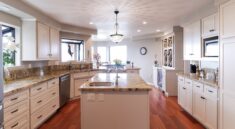If you are planning to landscape your home, a landscaping design Dallas guide can help you get started. The guide will help you choose the right plants and layouts based on site and climate. It will also cover Scale, Form, and Transition. These four concepts will help you make the right decisions for your yard space.
Hardscape
One of the first things to do in designing a hardscape landscape is to consider your budget. A small hardscape project can cost as little as $300 or as much as $100,000. You should consult with a professional landscaper to determine a budget that is realistic for your project. For example, a small, plug-and-play water feature and fire pit may cost as little as $300, while a large outdoor kitchen can cost up to $100,000.
Transition
Transition landscaping design is an excellent way to combine contemporary and traditional landscaping styles into one cohesive landscape design. The basic elements used in transitional landscaping include color, scale, line, form, and texture. The use of repeating colors and textures helps create a seamless transition that helps maintain the sense of continuity. The process can help you break up large areas or incorporate new features that are in-line with your new home’s current design.
Scale
Before planning a landscape, think about scale. Just like Goldilocks, you don’t want your landscape to be too big or too small. The scale of your design should be proportional to the size of your house and surrounding area.
Form
When creating a landscape design, it is important to take into account the site’s natural environment. This will help you design a functional landscape that is environmentally friendly and easier to install. Site environmental factors include sunlight exposure, wind direction, soil conditions, and sight lines. It is also important to consider the existing landscape, such as trees and shrubs. Make note of these factors on your plot plan.
Color
Color is an important element in landscape design. It can set a specific mood or create a relaxing environment. For example, red tends to evoke excitement, while blue tends to be more calming. The infographic below shows how to choose colors to complement each other.





